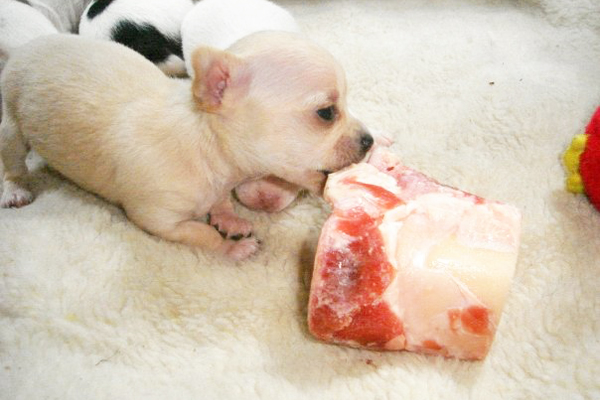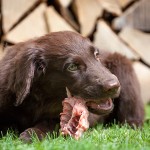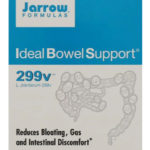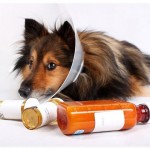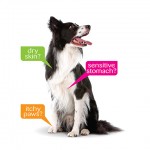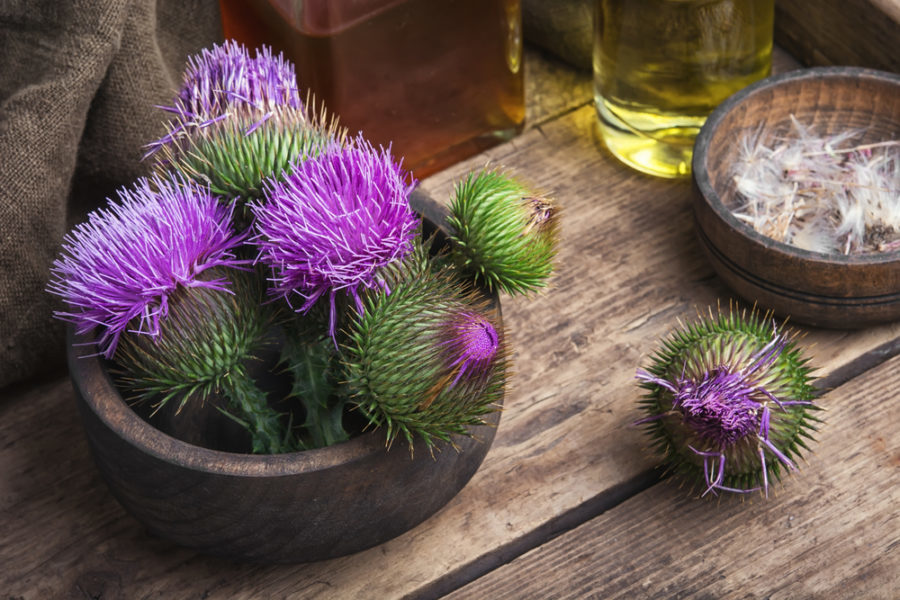“Most of the pet population today has weakened kidneys and other vital organs that have been compromised from the continuous consumption of harmful contaminants. The mercury found in fish products, and the herbicide residues found in genetically modified foods used in dog and cat food are setting the stage for thousands of animals to die. Pet deaths related to cancer are increasing every year. It is alarming to see these statistics increase without changes being made to eliminate the problem. A simple switch to biologically appropriate raw meat diets (The raw diet) make the biggest health correction possible.”
– Robert Mueller
By Robert Mueller
Man and animals are dependent on foods of plant and animal origin. As nature has taught us, food obtained in a fresh, raw state will spoil quickly. Thus methods to properly preserve foods and extend their shelf life have been developed and improved on over time.
 Heat destroys nutrients found in processed foods. Heat destroys nutrients found in processed foods. |
Freshness Factor Affecting Nutrient Density
Some people are concerned about the fact that preserved food is not as healthy as fresh food. Preservation techniques such as freezing and dehydrating will decrease some of the nutritional value of the food. It’s true that truly fresh food is always preferable and contains the maximum nutrient levels – however frozen or preserved food is always a better choice than processed and heat-treated food.
At What Temperature Do Nutrients Become Damaged?
Foods that are heated to a temperature exceeding 118° Fahrenheit will be subjected to a destruction of the vital enzymes and “good bacteria” needed for proper digestion and utilization of nutrients by the body. For this reason, the preferred methods to preserve food (especially raw meat and fish) are through the procedures freezing and freeze-drying.
How Long Can Meat And Fish Be Kept From Spoiling?
Fish spoils quickly and in climates with above normal heat temperatures, it will often spoil in less than 12 hours. A popular method for extending the storage life of fresh caught fish is to cool it with ice or freeze it.
The speed that meat spoils depends on several factors such as: storage temperature, acidity of the meat, structure of the muscle tissue, and the overall hygienic conditions used to process the meat. For example, a firmer muscular tissue, such as beef, spoils less quickly than organ meats. Proper hygiene and clean handling of the carcass has a positive effect on storage life. A good rule of thumb is to preserve the meat as soon as possible after slaughter.
Signs of Spoilage
Spoilage is the deterioration of food, which changes the taste and smell and makes it a carrier of disease and germs. A typical sign of spoilage is when the meat smell is similar to that of rotten eggs. Consumption of spoiled foods can cause symptoms such as diarrhea, vomiting, stomach pains and nausea. Serious cases can even lead to death.
|
|
Preservation practices can have two important effects on food:
- Retention of the original qualities and properties of the food (such as freezing raw dog food).
- Creation of a radical change in the composition of the food, which results in a product with completely new properties and quality (such as through the extrusion and heat processing of kibble dry dog food diets).
While there are other preservation techniques such as smoking, drying, corning, canning, and extrusion processing, nothing compares to the quality and integrity that freezing has to food. That is why raw diet does employ these other techniques in making our natural raw meat diets for dogs.
Freezing Raw Bones
 Handle raw meat safely Handle raw meat safely |
Fish and meat bones for canine consumption should also be frozen. This offers one of the safest ways to reduce the bacterial contamination levels and extends their shelf life considerably.
What About Freeze-Drying?
Another very popular method of preservation is freeze-drying. This method combines the advantage of minimal heat and vacuum that in combination lowers the moisture content of the food to approximately 2%. Bacteria have a much harder time growing in a low moisture environment. The only disadvantage that I can see with this method is the cost to preserve. Because the freeze-drying process takes quite a bit of time to do, it can significantly increase the ultimate cost of the product.
Proper Handling of Raw Meat – The Best Prevention Method
While manufacturers can do everything right from slaughter to end product, it is also important for the consumer to practice safe handling procedures for raw meat for both their family and pet. Paying attention to the details of handling meat and fish will ultimately render a safe, superior quality product.
We regularly educate consumers to not leave raw meat diets unrefrigerated for long periods of time. If the meat is not going to be consumed right away, it should be stored in a container with a lid and placed in the refrigerator for no more than 24-48 hours. Food left out for long periods of time, especially during the hot summer months or in warmer temperature climates can result in spoiled food and bacteria growth.
When feeding a raw diet to your pet, it is best to not leave the food left out for too long. If your dog does not eat the food right away, cover their serving dish and put the food back in the refrigerator to be served later in the day. At the end of the day, you should dispose of any uneaten food. This helps to keep food at its peak freshness and avoid any digestive upset.
Source
Robert Mueller, BSc, Pharm. is a registered pharmacist, author of “Living Enzymes: The World’s Best Kept Pet Food Secret.

